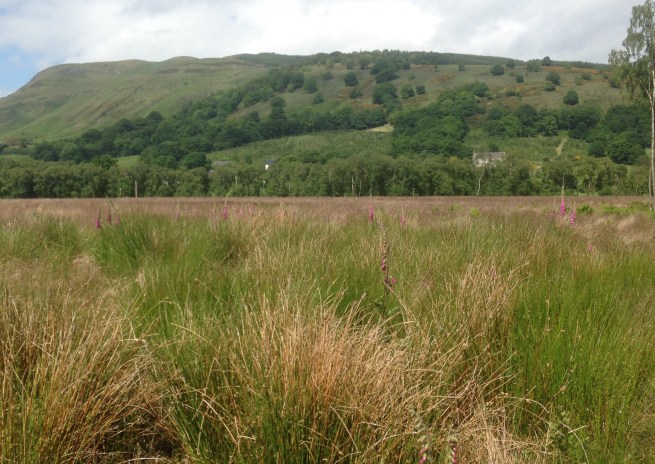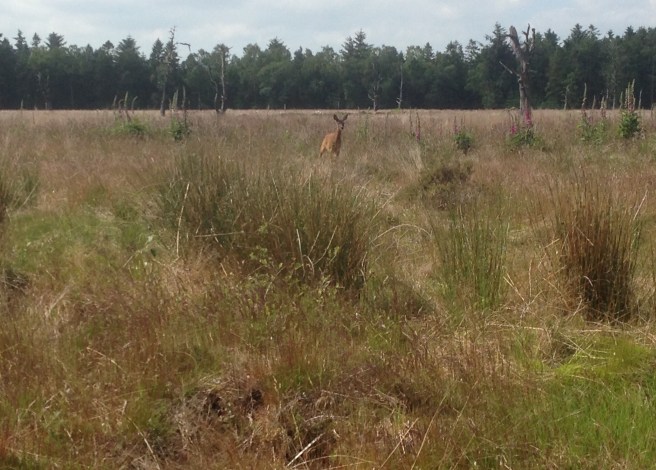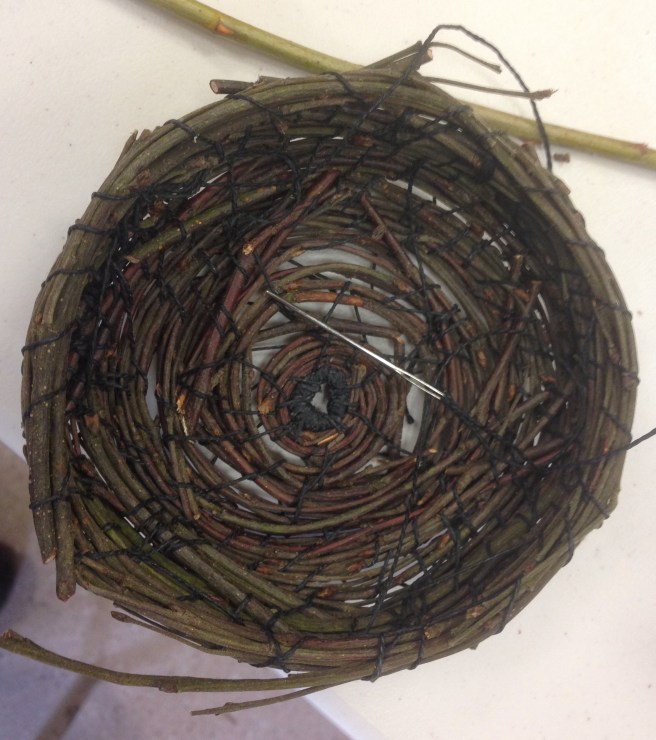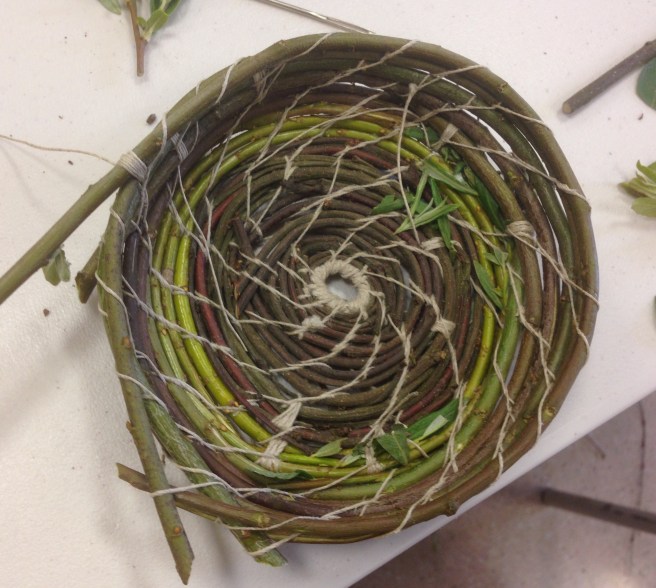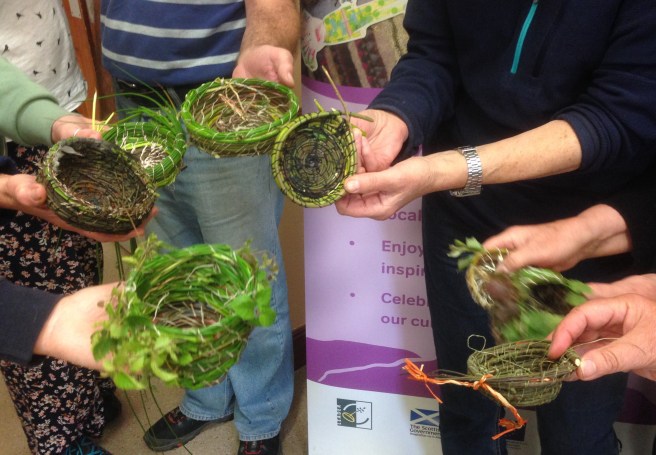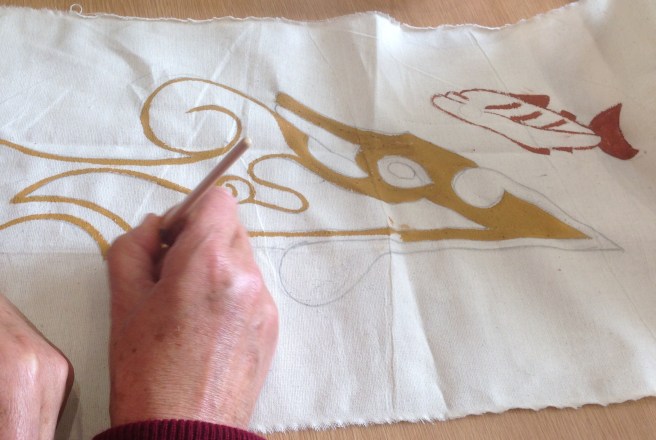One of the things I like best about teaching creative workshops is the diversity of the end results. We start off with the same basic processes, a limited selection of tools and materials and finish with a set of unique hand-made objects.
On Sunday six people came to my ‘Summer Baskets’ workshop at the Centre for Stewardship, my last workshop for the Living Lomonds Crafts of the Hills project. Over the last three years we have explored local heritage crafts in workshops and drop-ins, finding out a lot about local materials on the way. For ‘Summer Baskets’ I provided reedmace leaves, soft rushes and grasses, with some scented herbs for extra interest.
We started by splitting some of the reedmace leaves into strands to let them dry out a little and, after a bit of discussion, we decided to use a ‘fast start’ coiling technique. I’ve been using two starting methods for coiled baskets, the ‘button’ and the one I’m now calling the ‘sausage’! The group spent an hour or so on the first stage of the process, stitching the basket base.

At these workshops everyone decides for themselves what size of basket they want to make. When they feel the base is big enough they can start to build the sides, straight up or in a curve, controlled by placement of the coils of plant material. I encourage people to try introducing other stuff into the structure at this point and let their imaginations take off. I love to see people experimenting with the materials, making decisions about shape and colour, deciding whether to go plain or add decoration. Sometimes the baskets seem to make their own decisions. People say later “It just came out neat” or “It just ended up that shape!”
This question of control is interesting. I ask myself – how much do I or should I control the making process in a workshop? How much do the basket-makers control their materials? There is a fine balance between too much control and too little. I want to teach craft skills and encourage creative freedom, how do you do both? In workshops I have learned the value of dialogue, amongst ourselves as a group and between us and our materials. We observe and listen with respect, nothing is forced, not an opinion or a stitch. That’s my aim anyway. I try to notice when people are having difficulty with a process and encourage them to notice when their materials are struggling. “If they won’t bend into the shape you want, then consider another shape…”
On Sunday, one person found that rolling the reedmace strands while stitching helped keep them together and the stitched coils also looked good. Others in the group tried it out and liked the result. Dialogue in action.


















